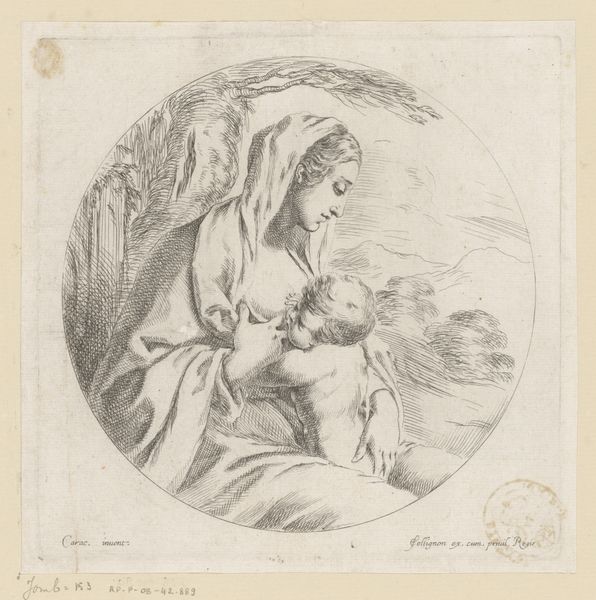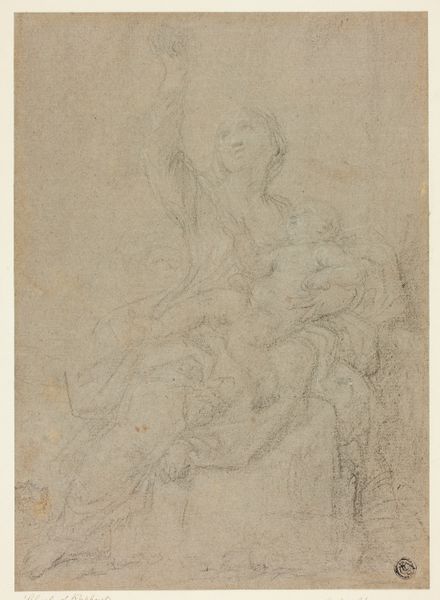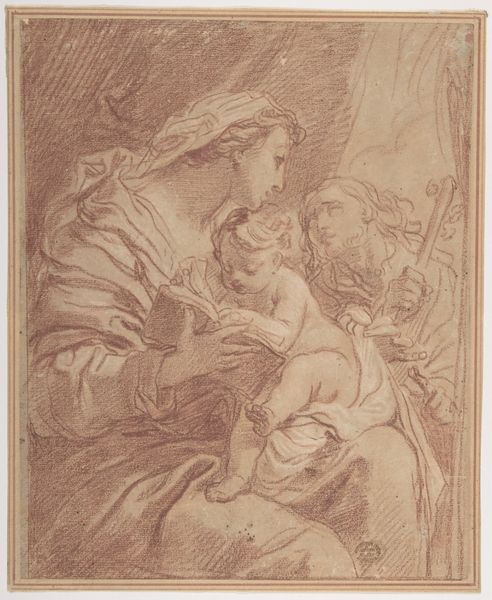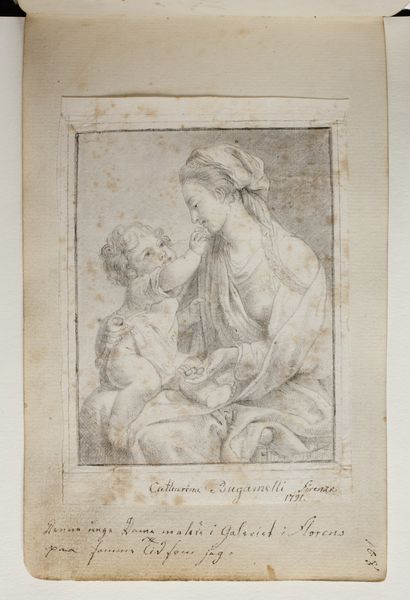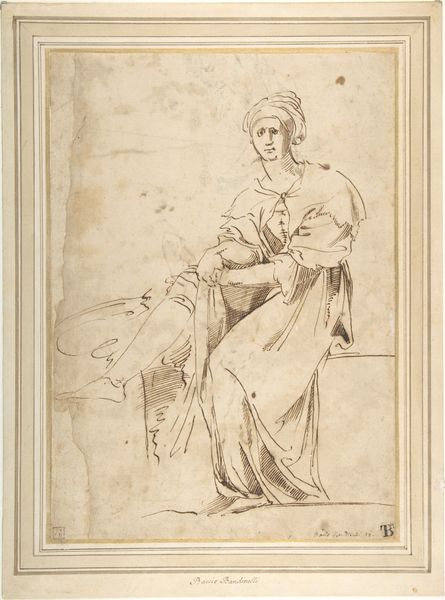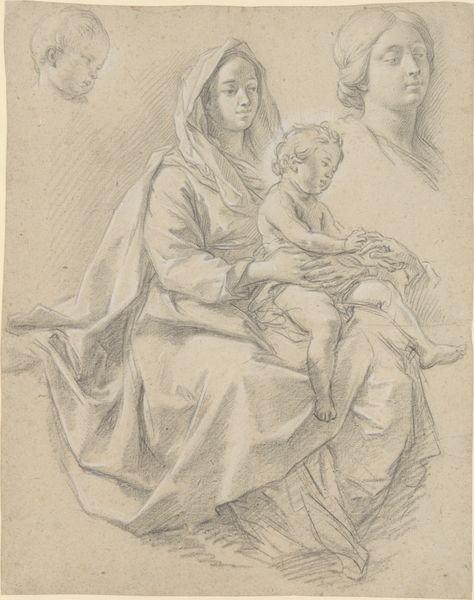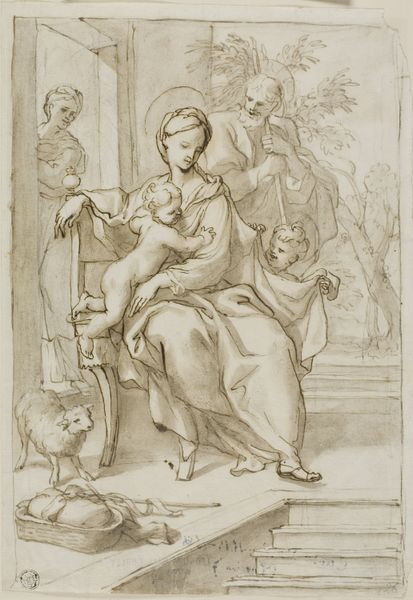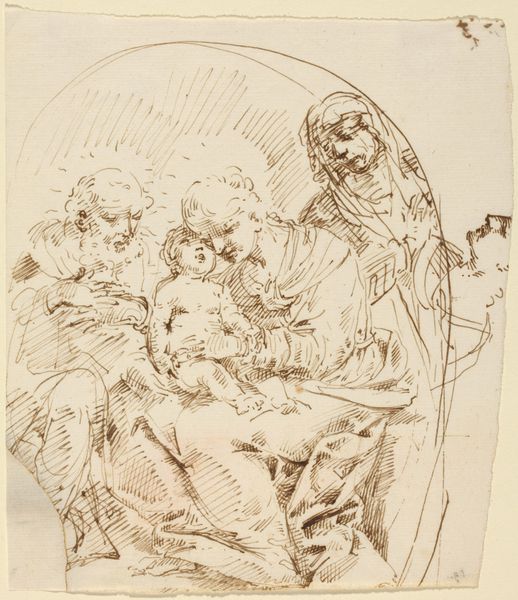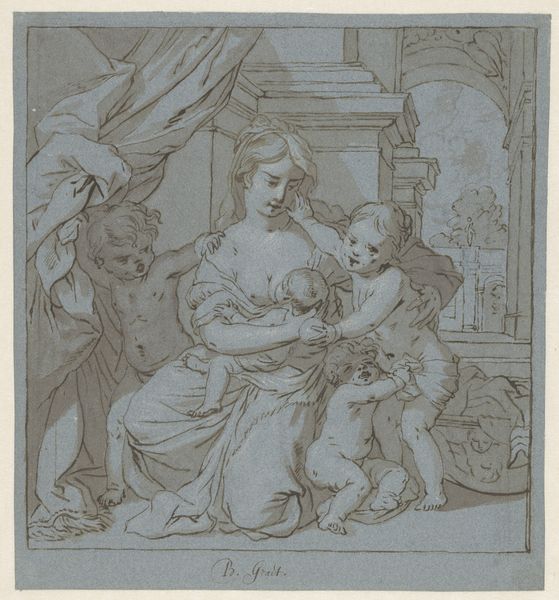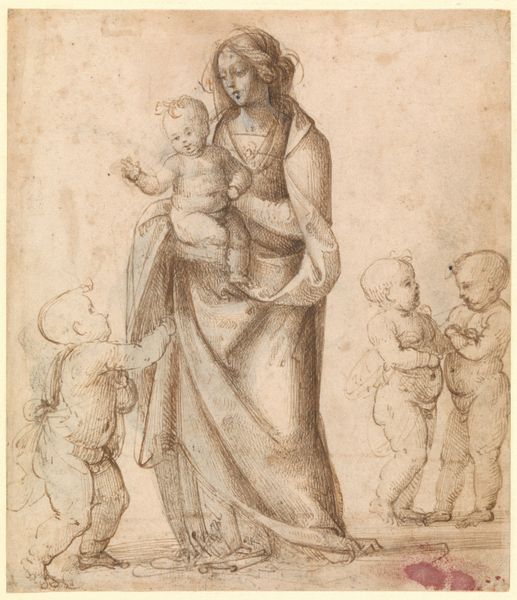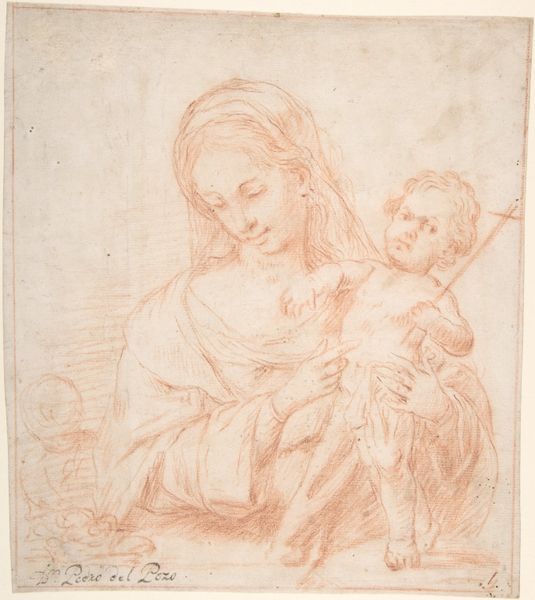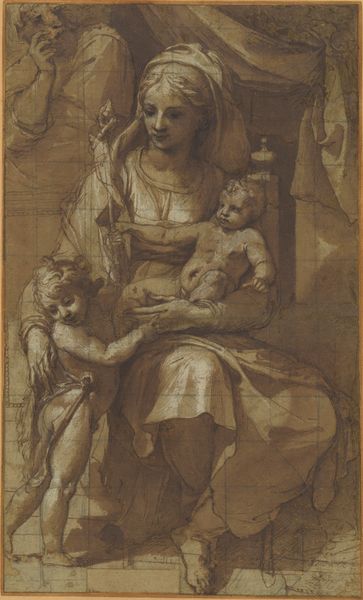
Design for a Funerary Monument with Caritas c. 18th century
0:00
0:00
drawing, pencil
#
drawing
#
allegory
#
figuration
#
form
#
pencil
#
history-painting
Dimensions: 9 1/8 x 7 13/16 in. (23.18 x 19.84 cm) (sheet)9 3/4 x 8 7/16 in. (24.77 x 21.43 cm) (mount)
Copyright: Public Domain
Editor: Here we have Giovanni-Battista Cipriani's "Design for a Funerary Monument with Caritas," an 18th-century drawing. It's striking how the figures seem both monumental and ethereal, captured in delicate pencil lines. What do you notice about the composition? Curator: The drawing presents an intriguing study in contrasting forms. Observe how the draped figure of Caritas dominates the composition, her form defined by flowing lines and careful shading, against the backdrop of a barely defined architectural setting. Note how the contrast heightens the relief-like projection of the primary figure. Editor: Yes, I see that. It’s like the monument exists only as an idea. How does that inform our understanding of Caritas? Curator: Consider how Cipriani utilizes the medium of drawing to create a sense of depth and dimension. The use of line, tone, and shadow brings to mind bas reliefs of greco-roman antiquity and its rediscovery in the Renaissance, filtered through the lens of Neo-classicism. Editor: It feels incomplete, but somehow that adds to its power. Are there any elements that particularly stand out in the execution? Curator: Certainly. Note the manner in which Caritas interacts with the children: they cling to her drapery, seeking shelter. I ask you to examine how this arrangement functions formally: is this merely about subject matter, or does this enhance the composition's affect? Editor: It gives it a sense of dynamism and ties the monument to humanity. Thanks, I am really glad I looked closely with you. Curator: And I am likewise affirmed by the incisive observation and discourse, reminding me of how we continuously revive our understanding.
Comments
No comments
Be the first to comment and join the conversation on the ultimate creative platform.
